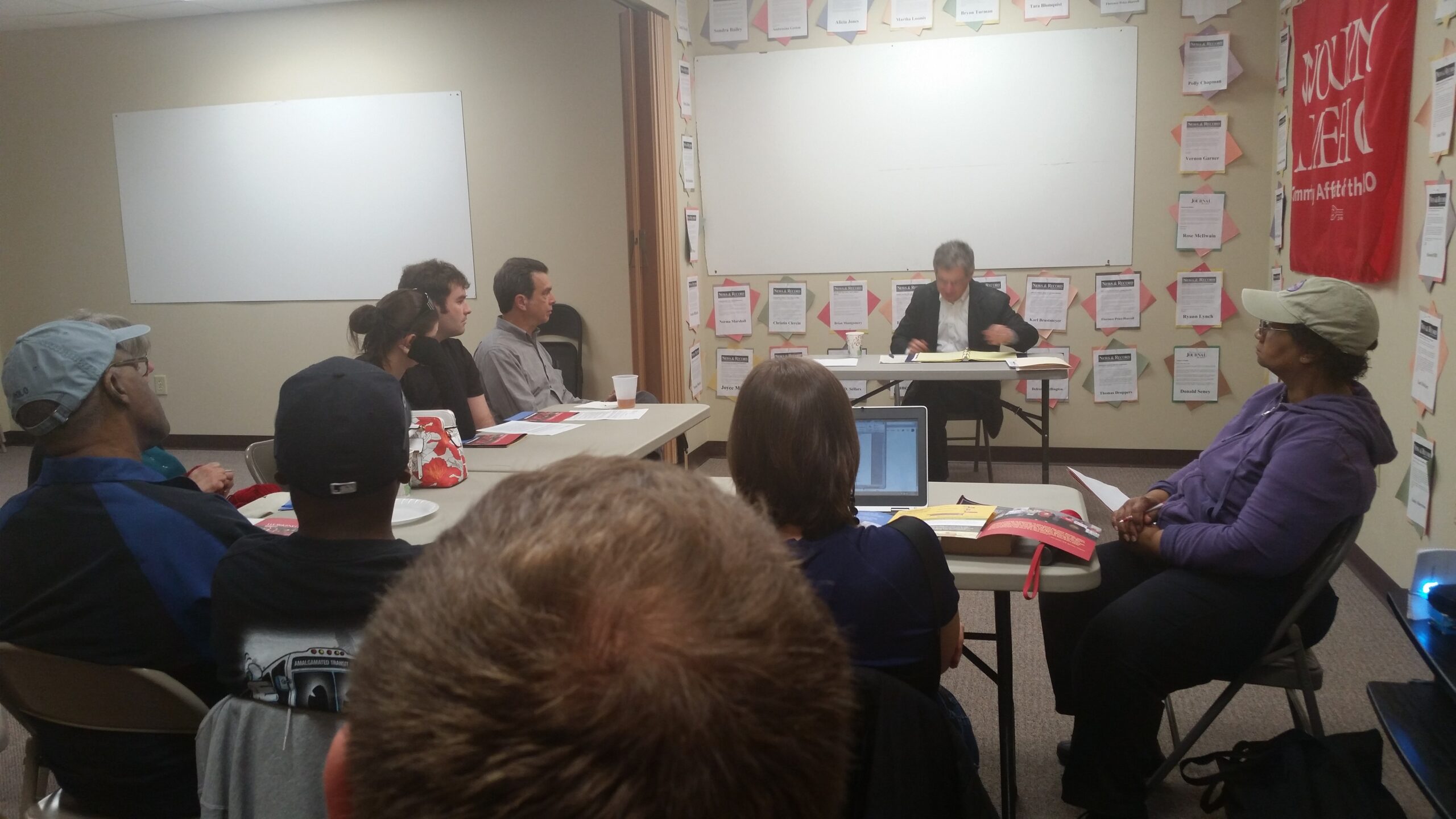Strategic Value: Organizing meetings provide an opportunity and space for your team to get together to plan actions, events and new ways to move your campaign forward. You can use meetings to introduce new folks to your group or host trainings to develop organizing skills.
Every meeting should build toward your overall campaign goals, whether that means building community (get to know each other!), taking direct action (write postcards!) or planning for an event.
Here’s how to get started:
- Start by reaching out to supportive friends and other like-minded folks. There is strength in numbers, and we’re most effective when we work with others. Having additional help will also increase your reach.
- Plan your organizing meeting. Choose a meeting spot like your home or another location where your group can talk uninterrupted. Places like libraries, union halls, coffee shops, schools and community centers are good places to start. Get creative with ideas like independent movie theaters during off hours. Set a date and time.
- Create an agenda. What is the goal of your meeting? Talk about an issue that you and your group cares about and what you can do about it. Maybe you want to plan a trip to a local town hall to voice your concerns about introducing school vouchers to public school systems, or maybe you want to mobilize activists around preventing repeal of Affordable Care Act.
- Invite others. While you have the help of your friends and other activists, you may want to grow your numbers depending on your goals. Don’t be discouraged if your first meeting isn’t too well-attended; these things take time! Use different methods to invite others — post on social media, go down your phone lists, send out an email or invite people in person.
- Connect with an organizer. Working America would love to help you plan your meeting, even if it is just to spitball ideas, work through questions or roleplay inviting new folks. Sign up to connect with an organizer here.
Sample Agenda Outline:
- Welcome (two minutes): Welcome everyone to the meeting and remind them why they are there.
- Introduction (10 minutes): Introduce yourself and share the issue that’s important to you. Ask others to do the same thing either in pairs, small groups or to everyone, depending on the size of your meeting.
- Share updates about the issue or state of the campaign (10 minutes): Share what you know about the issue or campaign and ask others to add any info they have. Feel free to use our issue guides or connect with an organizer ahead of time.
- Strategy and tactic discussion and planning (20-30 minutes): This should be the bulk of your meeting. Discuss your goals and what steps you as a group will take to achieve them. Decide on concrete tactics based on your strategy.
- Do you need to show strength in numbers really quickly? How about a calling campaign or postcard party?
- Do you want to highlight individual stories in the media? How about letters to the editor or an earned media event?
- Next steps: Now that you have a plan, decide on what actionable steps you will take next. This will include assigning roles and setting benchmarks for your planned action.
Tips:
- Always start and end meetings on time. People like to know what to expect and are more likely to return if you respect their time.
- Create a sign-in sheet. This will help you keep records of attendance and collect contact information for follow-ups.
After the meeting: Organize!
- Send notes and reminders to attendees. Get in the habit of communicating with your team regularly.
- Continue to build. Actively recruit more people to the group. Remember, there is strength in numbers.
- Create a social media group so that participants can exchange ideas.

 PlananOrganizingMeeting.pdf
PlananOrganizingMeeting.pdf